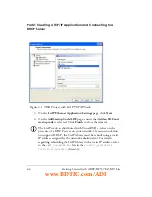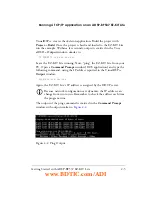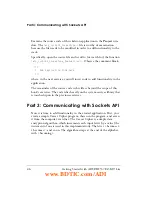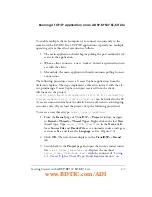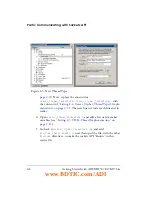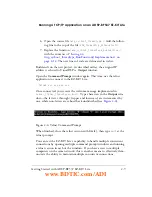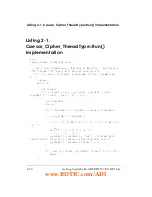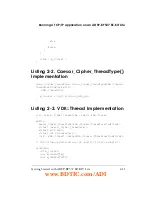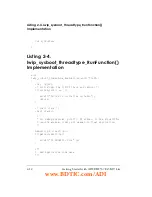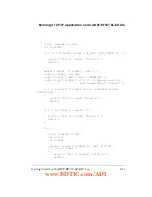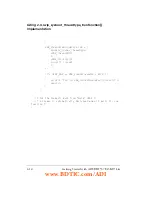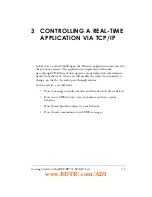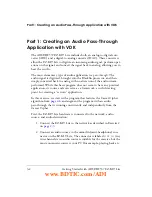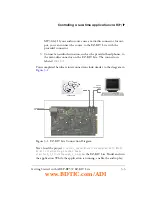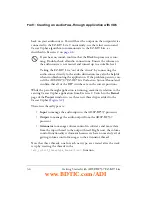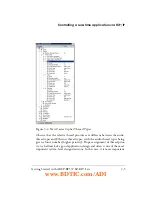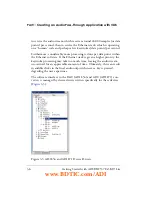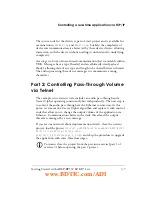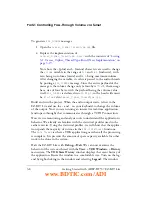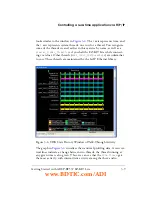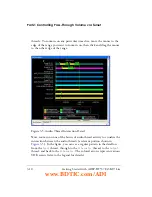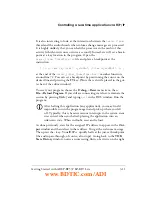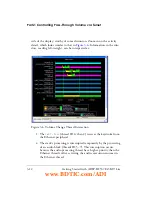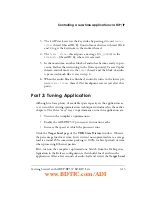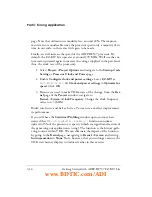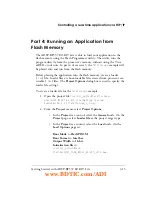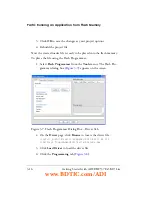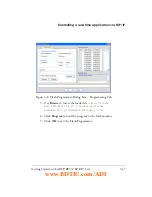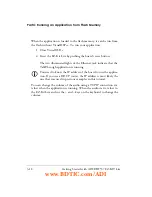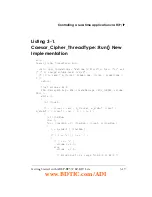
Part 1: Creating an Audio Pass-Through Application with VDK
3-4
Getting Started with ADSP-BF537 EZ-KIT Lite
back on your audio source. You will hear the output on the output device
connected to the EZ-KIT Lite. Concurrently, use the telnet session and
Caesar Cipher algorithm to communicate to the EZ-KIT Lite, as
described in Exercise 2 on
.
[
If you hear no sound, confirm that the Blackfin processor is run-
ning. Double-check all audio connections. Ensure the volume on
the audio source is not muted and turned up to a suitable level.
Taking the EZ-KIT Lite “out of the circuit” by connecting the
audio source directly to the audio destination may also be helpful
when troubleshooting the application. If the problem persists, con-
sult the
ADSP-BF537 EZ-KIT Lite Evaluation System Manual
and
confirm that all of the DIP switches are in the correct positions.
While the pass-through application is running, examine its relation to the
existing Caesar Cipher application from Exercise 2. Switch to the
Kernel
page of the
Project
window to see three new thread types added to the
Caesar Cipher (
).
These new thread types are:
•
Input
to manage the audio input to the ADSP-BF537 processor
•
Output
to manage the audio output from the ADSP-BF537
processor
•
Attenuator
to manage volume control in software and move data
from the input thread to the output thread. Right now, the volume
control functionality is dormant because we have no means (yet) of
getting volume control messages to the attenuator thread.
Note that three threads, one for each new type, are created after the stack
is up by creating the threads in the
lwip_sysboot_threadtype_RunFunction()
function.
www.BDTIC.com/ADI

